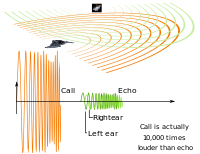
Automatic detection method for monitoring odontocete echolocation clicks
Sign Up to like & getrecommendations! Published in 2017 at "Electronics Letters"
DOI: 10.1049/el.2016.4590
Abstract: Passive acoustic monitoring records large amounts of acoustic data, and thus an efficient detection method is essential to analyse these data. A novel approach is proposed to automatically detect odontocete echolocation clicks. A time–frequency filter… read more here.
Keywords: echolocation clicks; odontocete echolocation; detection method; echolocation ... See more keywords

Tracking sperm whales (Physeter macrocephalus) detected with irregular time intervals
Sign Up to like & getrecommendations! Published in 2018 at "Journal of the Acoustical Society of America"
DOI: 10.1121/1.5068376
Abstract: Passive acoustic monitoring (PAM) is a method that has been proved to be a powerful tool for monitoring sperm whales. Sperm whales frequently emit loud, short duration, clicks for the purposes of echolocation. The clicks… read more here.
Keywords: kalman filter; time; sperm whales; monitoring ... See more keywords

Description and classification of echolocation clicks of Indian Ocean humpback (Sousa plumbea) and Indo-Pacific bottlenose (Tursiops aduncus) dolphins from Menai Bay, Zanzibar, East Africa
Sign Up to like & getrecommendations! Published in 2020 at "PLoS ONE"
DOI: 10.1371/journal.pone.0230319
Abstract: Passive acoustic monitoring (PAM) is a powerful method to study the occurrence, movement and behavior of echolocating odontocetes (toothed whales) in the wild. However, in areas occupied by more than one species, echolocation clicks need… read more here.
Keywords: classification; indian ocean; plumbea; ocean humpback ... See more keywords

Discriminating and classifying odontocete echolocation clicks in the Hawaiian Islands using machine learning methods
Sign Up to like & getrecommendations! Published in 2022 at "PLoS ONE"
DOI: 10.1371/journal.pone.0266424
Abstract: Passive acoustic monitoring (PAM) has proven a powerful tool for the study of marine mammals, allowing for documentation of biologically relevant factors such as movement patterns or animal behaviors while remaining largely non-invasive and cost… read more here.
Keywords: odontocete echolocation; echolocation; machine learning; discriminating classifying ... See more keywords